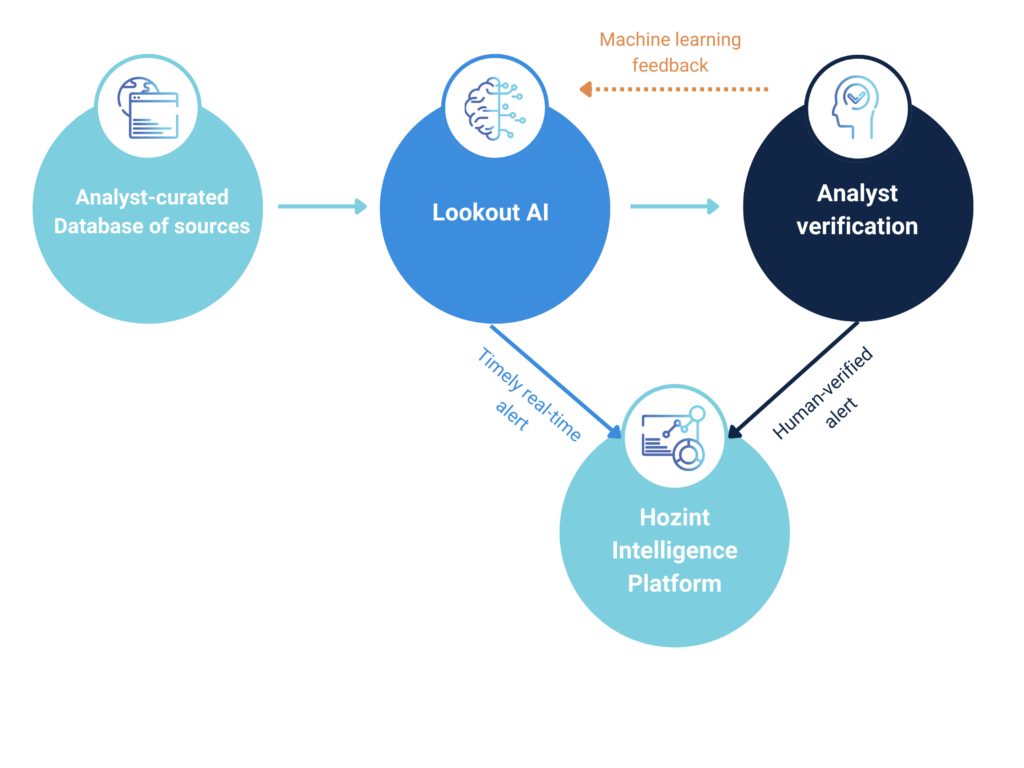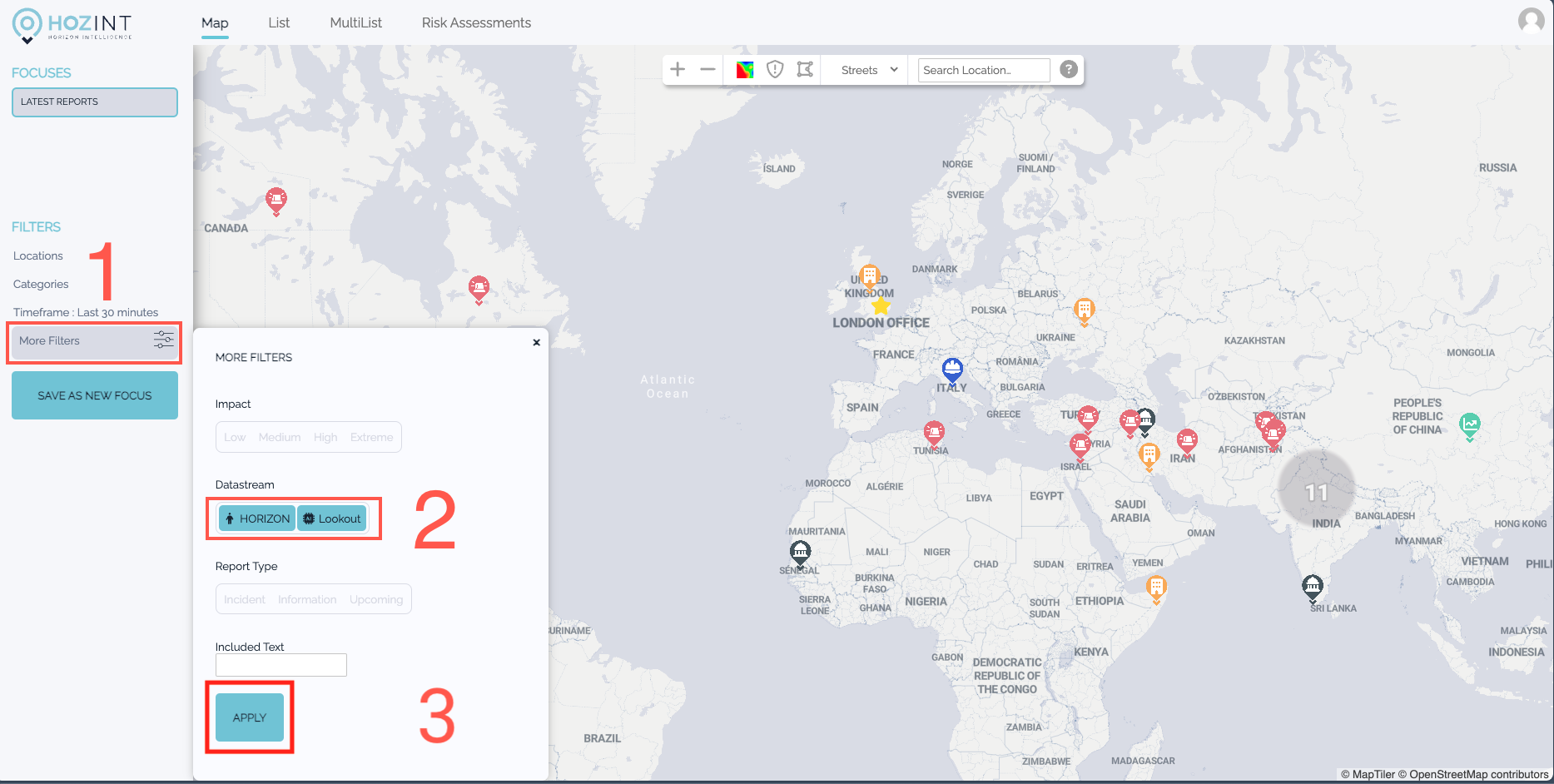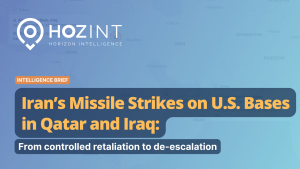In today’s rapidly evolving landscape, AI is revolutionising how analysts carry out Open Source Intelligence (OSINT) to monitor security incidents in real time.
Hozint uses its proprietary software called “Lookout AI” to generate alerts in real-time. Designed to empower analysts, Lookout harnesses the power of artificial intelligence to detect and analyze security threats in real-time on Hozint’s intelligence platform.
To understand how Lookout AI works we have prepared a short, high-level, explanatory guide.
Lookout explained
Lookout provides intelligence analysts with a continuous stream of timely and relevant information, enabling them to respond swiftly to critical events. By leveraging Lookout, analysts can stay ahead of emerging threats, make informed decisions, and ensure the safety and security of their organization’s assets with unmatched efficiency and precision.
Lookout has two main tasks:
- 1. To provide users with more relevant alerts faster;
- 2. To automate the repetitive tasks that our analysts have to do to generate and/or verify an alert (e.g. browsing sources to identify relevant information, writing a report into a database, classifying the report by location, topic, etc.). Therefore, Lookout is a sort of assistant helping analysts to free time from repetitive tasks. This way analysts can be more efficient and produce more and faster. At the same time, Lookout benefits from the interaction and feedback from analysts by learning from their edits (i.e. machine learning).
Therefore, more than being a technology by itself, Lookout is part of a process; a process that starts with human inputs and ends with human feedback. To better understand this point, let’s have a look inside Lookout.
Lookout is composed of three main elements:
- 1. Sources: Lookout needs sources from which to extract information. These can be news websites, social media, governmental websites etc. Our team of analysts have manually compiled a database with thousands of sources, which are classified by country, language and credibility (the latter being a constant work in progress). Therefore, Lookout crawls information from a human-curated pool of sources. This database is constantly reviewed and expanded with new sources. Clients can also request us to add sources to the database so that they can be crawled by Lookout as well.
- 2. Datasets: For Lookout to understand what is relevant from what is not, it needs some training material or, in other words, some examples of what to look for. These examples are called “datasets”; a compilation of hundreds of thousands of pieces of information dealing with a specific topic (e.g. crime, protests, etc.). Our datasets have been compiled by our analysts and are constantly reviewed and refined so that Lookout can rely upon the best training material to learn from.
- 3. Algorithms: These are the actual codes that take information from the sources, process them according to the datasets and generate a report (alert) as the outcome.
The workflow
- 1. Every 5 minutes, Lookout looks for new information published by the sources and selects relevant ones based on the training datasets;
- 2. Relevant news is then classified by country, location, category and impact;
- 3. Lookout-generated reports are then sent in two directions simultaneously:
- a) Towards the Hozint intelligence platform, so that users can visualise potentially relevant information in real-time;
- b) Towards Hozint’s analysts so they can verify the report and, by editing the Lookout report, they also train the algorithms.

How to use Lookout in the Hozint platform
To use the AI-generated alerts from Lookout follow these steps:
- 1. In the left sidebar, look for the filter “More filters“;
- 2. In the “Datastream” section, select Lookout (for AI-generated reports) and/or Horizon (for human-edited ones).
- 3. Click on “Apply“





